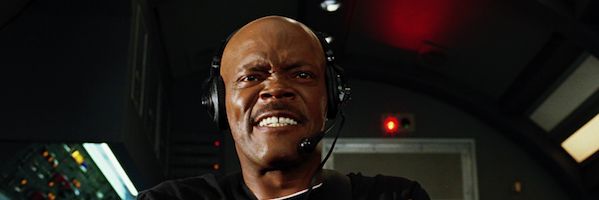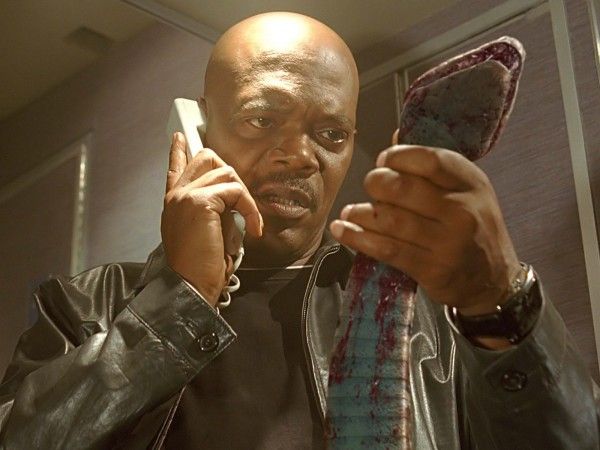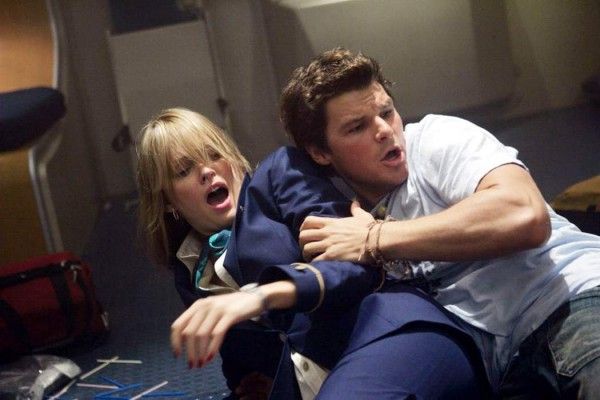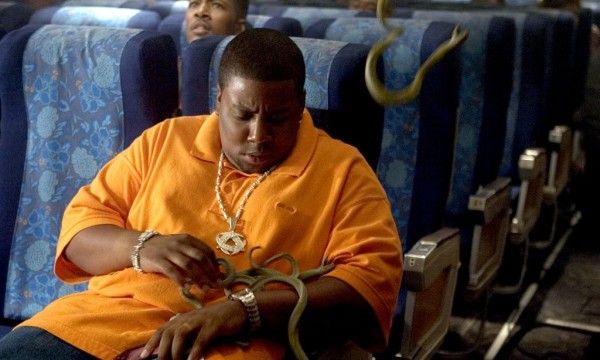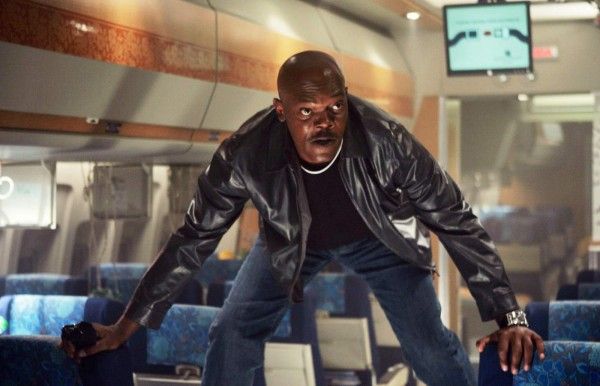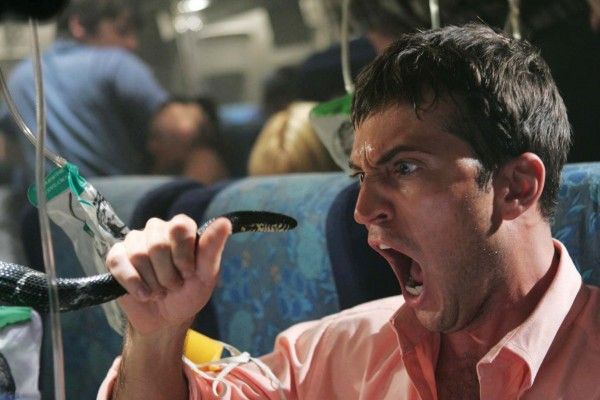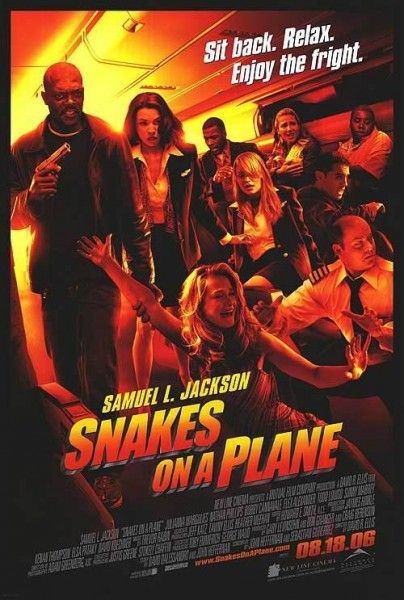When a pocket of the Internet learned that Samuel L. Jackson was starring in a movie called Snakes on a Plane it demanded that the fiery actor would declare—with furious anger—that it wanted “these motherfucking snakes off this motherfucking plane.” That line, of course, came from a “fan-made” trailer for the film after it had already been shot, but had not been released. Hollywood was enamored with this loud “fan base” that grew out of both mocking and embracing such a straightforward title that left little to the imagination. New Line that it could make a hit by giving the vocal section of the Internet what it wanted: profanity and bombast. But to do that it needed to add scenes—but it also previously ignored that what the Internet wanted is the same thing its star pleaded for and couldn’t get them to do.
As the film hits the elevation of a 10-year anniversary today—and as Jackson now says “fuck you” to anyone who criticizes it—we look back at what Planes legacy should become: Hollywood, please don’t listen to the Internet.
Now, to Jackson that might sound like a criticism but let’s chill for a second. I’m not dismissing the movie for yes, it is as advertised—there are indeed snakes on a plane—but I do want to point my finger at movie execs. Especially since ten years later studios seem to be looking too much at what fans on the internet think and are lessening their products for it. And they don’t need to. Hell, they didn’t even need to with Planes, as Jackson knew what he thought the movie needed the moment he signed on. And that Bad Motherfucker that signed on to a movie called Snakes on a Plane because “it’s one of the movies I would have gone to as a kid” and the fire and brimstone thespian vocally wanted an R-rated take from day one.
It wasn’t until the movie received fake “fan” websites, videos and t-shirts that New Line decided to spend a rushed five extra days to shoot some R-rated scenes for the finished film. Those extra days brought a few more swear words, including the video suggested catch phrase (the fan-written line even received enough press that Vegas bookies began taking bets on how often it’d be used; sure, always bet on black, but in this case you should’ve only bet on Jackson saying that MF line once). But the lengthiest scene to come from the reshoots was adding nudity, drug use, and a snakebite to a woman’s exposed breast during a bathroom sex scene.
Five days is not a lot of time to change the tone of a movie and yes, aiming for a specific rating does create a very specific tone. The scenes that were added in these, let’s call them the “motherfucking reshoots”, stick out like a sore thumb in the movie. When Taylor Kitsch and Samantha McLeod go into the bathroom together their goal isn’t to join the mile high club; it’s to fit as many of the MPAA’s R-rating checklist into one confined space. The clothes come off and a joint is lit for thrusting. After one of those snakes on the plane bites McLeod right on the nipple nothing that would warrant an R-rating happens again until much later in the movie. And this R-rated “bad boy” scene throws the movie’s tone askew. It’s a grindhouse moment in a movie that wasn’t made to be a grindhouse movie.
Snakes on a Plane wasn’t originally shot as high drama, either, but director David R. Ellis did have a consistent tone of tongue-in-cheek cheerfulness that he leverages against the title, but it’s never able to become a true horror-comedy because the horror scenes are relatively tame, and why wouldn’t they be? They were shot for a PG-13 movie. In five days you can add an occasional gruesome kill, pop out breasts and pepper in some F-words but those scenes all feel like they belong in a different movie than the thriller-comedy of manners that Ellis originally shot.
Now, Jackson wanted New Line to shoot extra R-rated takes from day one so that Ellis could work on two different approaches. Talking to Entertainment Weekly when the film was in full-on hype mode, he said that from day one he asked for “extreme action” and “gruesome snake attacks in slo-mo”. Plus there would need to be swearing because “nobody cursing is kind of unrealistic when you’re in an airplane with a bunch of fucking snakes.” The shoot itself was so gentle that Jackson pleaded for alternative visceral takes to avoid reshoots that often bloat the budget. But the star didn’t get what he wanted.
The reason why the Internet eventually caught wind of this flick wasn’t because they were “fans”—as New Line would be too quick to label them; reacting to something on the internet doesn’t make one a fan, it just makes one a participant in online culture—but because Jackson, who shoots so many movies each year, was on a press tour for the forgettable comedy, The Man, and he told reports that he was working on a movie called Snakes on a Plane. That was the script title that Jackson signed up to play, but New Line had grown wary of the B-movie title and after being turned down by so many actors due to the title the studio decided to add “a veneer of class” by retitling it Pacific Air 121. Not convinced that it was just a working title for actors to sign on, Jackson took it up with the studio who said “they didn’t want to give too much away” to which Jackson lost his cool, “Are you out of your fucking minds?! That’s exactly what you want to do!” he told EW. “How else are you going to get people into the movie? Nobody wants to see Pacific Air 121.” Jackson could not get those extreme alternate takes, but he wasn’t just going to sit quietly in coach on this one; his slip to the press that he was shooting a movie called Snakes on a Plane lit the fuse and the rest, as they say, is history.
But what has history shown us? Well, that Jackson was right all along. With all the Internet meme-making fun the final product proved to be too tame because you can’t redo a movie on a whim. Plane didn’t debut as high at the box office as New Line thought it would, not after all the press and all the “fan-made” memes. The costly reshoots that Jackson hoped they’d avoid added to a budget that then added more in marketing than ever intended and the film needed overseas box office to make a minor profit (although marketing numbers were not provided). But five-days of reshoots also didn’t add enough to the movie. And ultimately, the film, like a slithering snake, had no legs. Word quickly spread that it wasn’t as bad-ass as people hoped, but also, there proved to be a valuable lesson: you cannot expect everyone making noise on the internet to spend money on your product. The Internet is a vocal space. It takes mere seconds to post a flippant remark. Minutes to make a meme. But it takes hours (and money) to go to the theater and watch.
The buzz on Planes was ultimately a house of cards. But in its star, Samuel L. Jackson, they had someone who was passionate about making a specific product: something wild and crazy that he would’ve loved when he was younger. Instead of listening to what the Internet thinks something could become, Hollywood should listen to the person you hired to make the product, and make a better product.
This summer ten years later, we’ve seen movies pivot too much to the Internet. On one side there’s Suicide Squad’s producers asking for more levity in reshoots after Batman v Superman received internet criticism for being too dark and too serious, and then handed over the reins of the feature film to the trailer company that edited a trailer that the Internet collectively found “fun.” The end result created a mish-mash of sensibilities, a director’s vision fighting against a too-many-cooks-in-the-kitchen marketing pivot. On another side there’s the female-led Ghostbusters reboot that not-so-subtly depantsed the extremely vocal anti-new cast crowd with far too many jokes about the incompetency of men. The first time or two was funny, but then it began to not serve the story and instead felt like a time capsule reaction to shitty people on the Internet. In Paul Feig's case, it would be hard to resist the impulse to take Internet trolls down a notch. And for WB execs, I’m sure that it is hard to receive negative reactions to a comic book movie while you have so many others in production. And with studios releasing images during production, trying to build and maintain hype for up to two years of production of larger films, the resistance to seek feedback to costumes and appearances is going to be hard, too (looking at you Pennywise).
But making movies is hard. And they’re successful when there’s obvious passion (just look at Deadpool: sure the Internet generated hype by re-sharing videos and script proposals from years past, but the creative team who made those videos and scripts maintained their passion and were allowed to make exactly what they wanted; for Deadpool, the Internet served its purpose to reheat a dish, not cook the meal). So Hollywood, please, stick by your directors that you’ve hired, stick by your actors that sign on to make a specific movie, and stop trying to pinpoint what people on the Internet want. Pivoting so far downstream only creates mish-mashed messes where no one gets what they want. We’ve seen that this summer, but don’t forget Snakes on a Plane ten years ago. The star wanted it to be one thing, the studio wanted it to be something else, the Internet decided what it should be, and after some catering reshoots no one got enough of what they wanted.

